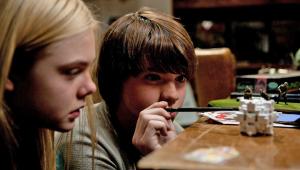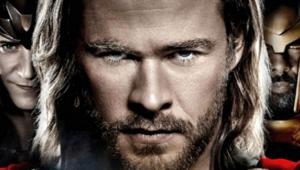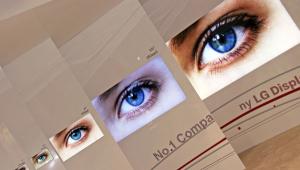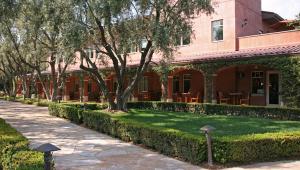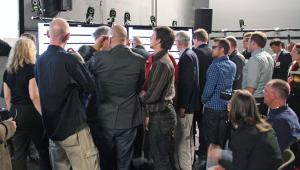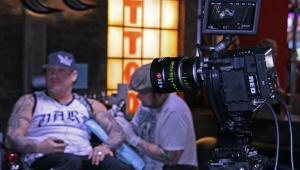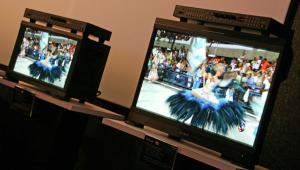NAB 2012: Christie High Frame Rate 3D Demo
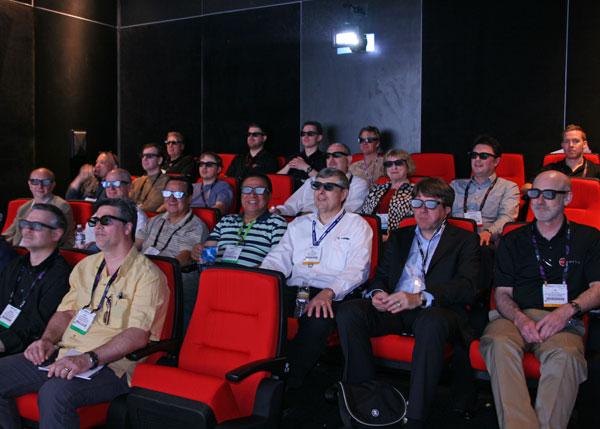
The demo was played on a Christie CP-2220 2K projector fitted with a RealD ZScreen polarizer firing onto a Harkness silver screen; the source was a Christie Integrated Media Block (IMB) media server attached to the projector. We were told that last year, such a demo would have required four projectors and four servers, illustrating how quickly digital-cinema technology evolves.
After an on-camera introduction by Cameron, we were shown several scenes of a medieval banquet and sword fight, each one shot and displayed at 24, 48, and 60fps, with Cameron describing what to look for in voiceover. At 24fps, objects in motioneither by themselves or as a result of camera movementwere quite blurred as always with this frame rate. At 48fps, the objects were much sharper, and at 60fps, they were razor sharp and perfectly clear.
There were also some examples of slow-motion effects created by "double printing" (displaying each frame twice to achieve half speed) and "overcranking" (shooting at a faster frame rate than that used to display the image), and the overcranked slo-mo looked much smoother and more natural with no edge artifacts. Finally, we saw some examples of footage shot at 48 and 60fps converted to 24fps for theaters that cannot display higher frame rates, and the result was no worse than images shot at 24fps in the first place.
Cameron pointed out that 24fps is the last vestige of 20th-century movie technology still in universal use today. It was established about 100 years ago as the slowest frame rate that can create the illusion of continuous motion to the human eye and still allow soundtracks to be printed on the film. But it suffers from serious motion blur that we've all become entirely accustomed to, and modern technology allows moviemakers to transcend this limitation.
There are many who argue that higher frame rates don't look like film, but more like video, and they are right. Cameron even used the term "hyper-real" to describe the effect. But I'm not one who prefers the blurry look of film just because that's the way it's been for the past century. I think 48 and 60fps look incredible, and I can't wait for movies that use them, such as The Hobbit and Avatar 2. My only concern is how consumers will know which theaters are showing them at the higher rates. I'll certainly let you know anything I find out about that, so stay tuned!
